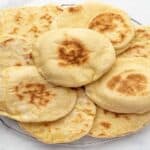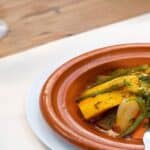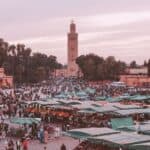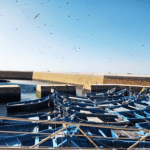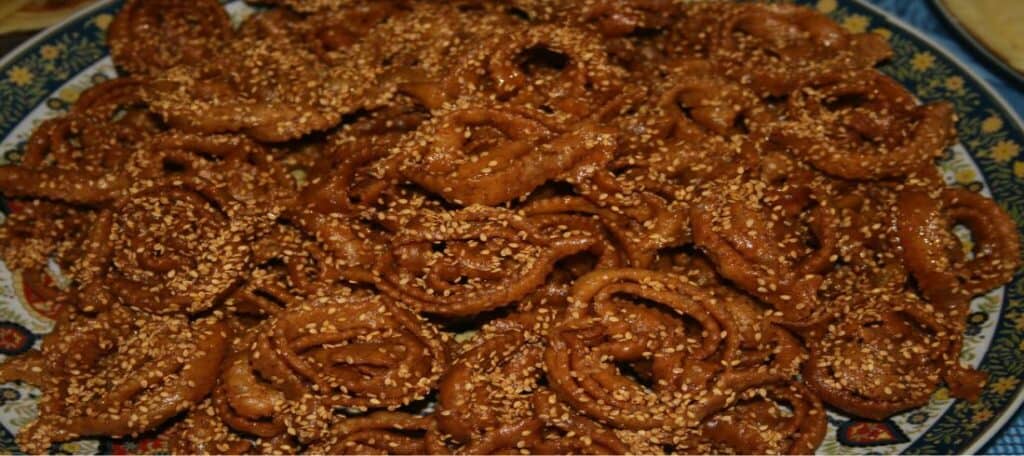
Picture a sweet so special that groups of women gather to make them by the hundreds. They are showing their community spirit and cultural pride. This is all about Chebakia, a delicious Moroccan treat with deep meaning. In Morocco’s busy kitchens, it’s common to see women working together. They make sure there are plenty of chebakia cookies for Ramadan. These decorative cookies, numbering 60 in a batch, show the great hospitality in Moroccan heart.
The Cultural Significance of Chebakia in Moroccan Festivities
Chebakia is central to Moroccan celebrations, symbolizing the nation’s rich culinary history. Made with spices and honey, it delights those who taste it at special events. These include religious occasions, where Chebakia signifies happiness and unity.
Ramadan’s Delightful Companion
At sunset in Ramadan, the day’s fast breaks and Chebakia is eagerly awaited. This sweet pastry contrasts perfectly with savory harira soup. Its role is so vital, it’s a must-have when families and friends gather to end their fast, showing its deep cultural importance.
Celebrations Beyond Ramadan: Weddings and Birthdays
Not just in Ramadan, Chebakia also graces weddings and birthday parties in Morocco. Even the Mizrahi Jews in Israel celebrate with it at henna parties, showing its wide love and traditional value.
Year-Round Availability: Bakeries and Market Stalls
Available all year, you can find Chebakia in bakeries and markets across Morocco. Whether from upscale bakeries or local stalls, it might be pricey but offers an authentic Moroccan taste anytime. It’s a testament to the area’s lasting food heritage.
There’s a Moroccan tale about Chebakia’s origin, linked to a merchant captivated by a girl he saw from his window. This story adds mystique to Chebakia, weaving it into the fabric of both modern and traditional celebrations.
The Intricate Art of Making Chebakia
Making Chebakia, a beloved Moroccan sweet, showcases the rich culture from the ancient Berber tribes. This sweet is more than a treat; it’s a piece of Moroccan tradition and culinary skill. Mastering this dessert involves detailed processes honed over Morocco’s vibrant history.
The recipe’s special taste comes from spices like cumin, ginger, turmeric, and saffron. Introduced by the Arabs in the 7th century, these spices are key to Moroccan food. They give Chebakia its unique sweet and savory flavor, similar to the famous Moroccan tagines.
Creating Chebakia involves an ancient technique of folding dough into a gorgeous flower shape. This step shows the depth of traditional Moroccan cooking methods. After shaping, the dough is fried until golden and then soaked in warm honey. This gives it a delightful taste, similar to other Moroccan pastries.
- Folding the dough: A meticulous process that culminates in the Chebakia’s distinct floral form.
- Frying: Achieving the delectable crunch and golden-brown color.
- Honey-soaking: The final step that infuses the pastry with its iconic sweet and sticky flavor.
In Morocco, especially Marrakech, the tradition of making Chebakia is passed on in cooking classes. These sessions offer a deep dive into Moroccan food culture, guided by local chefs. They’re not just about cooking; they’re about connecting with Morocco’s rich history and traditions.
Chebakia
The preparation of Chebakia showcases dedication to culinary traditions. This Moroccan sweet’s unique taste comes from both special ingredients and ancient methods. These traditions have been handed down for generations.
Key Ingredients for Authentic Flavor
To start, 1⅓ cups (190 g) of sesame seeds are toasted until golden brown. This step highlights the seeds’ nutty flavor. Cinnamon, anise seeds, and saffron add to the mix, creating a rich taste. Then, 3 tbsp of orange blossom water is added to 5 cups of honey. This mix makes a fragrant syrup vital for soaking the pastry.
Essential Techniques: Folding Dough into a Flower Shape
Making Chebakia involves folding dough into a flower shape. This requires skill, similar to sculpture. The process starts with dividing the dough and letting it rest in the fridge for 15 minutes. After resting, the dough is rolled out into a long rectangle. This prepares it for the crucial folding that gives Chebakia its shape.
The Fine Balancing Act: Frying and Honey-Soaking
Frying the dough at 315F is a key step. It turns golden in 5 to 6 minutes, with a flip in between for even cooking. Then, the fried pastry soaks in honey syrup. This isn’t just a quick dip. It’s a thorough soak to infuse sweetness. Often, they are left to cool for hours to enhance the flavor. Finally, Chebakia can be stored in an airtight container. It stays good at room temperature for weeks or can be frozen for months. This step marks the end of Chebakia’s creation journey.
The table below outlines the steps in making Chebakia. It shows everything from the raw materials to the finished dessert:
Through combining traditional techniques and recipes, every Chebakia batch has a story. It shares a part of Moroccan culinary history.
As the day ends, we see the true beauty of Moroccan food through Chebakia. It’s not just a treat, but a piece of Morocco’s heart. It’s been made for generations, showing the depth of Morocco’s culture during celebrations. The Moroccan Office of Industrial and Commercial Property recognizes its value. They see its cultural importance and how it should be protected. This highlights the worldwide effort to keep culinary heritage alive. Morocco is at the forefront, working hard to protect its food traditions at seminars and workshops.
Chebakia is more than just food; it’s a sign of welcome and festivity in Morocco, especially during Ramadan. Making Chebakia blends art with precision, a tradition cherished and shared. It fits perfectly with the rise in sweet consumption during Ramadan, as noted in studies. This tradition shows the creativity of Moroccans, who can turn simple ingredients into something extraordinary, regardless of their wealth.
The magic of Chebakia goes beyond its complex design. It tells the story of Morocco’s history, culture, and dedication to keeping its food stories alive. For those who love cooking or culture, trying to make Chebakia is a chance to connect with Morocco’s rich traditions. Taste the spices, textures, and sweetness, and you’re tasting Morocco’s story through one of its most cherished sweets.



